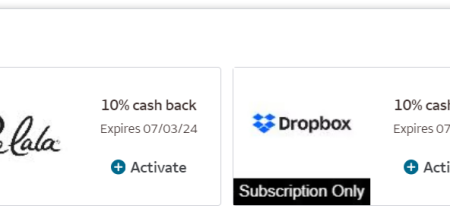The Loyalty Business on the Fiat Standard
I worked at Mastercard for the last ten years, in the San Francisco office, building card-linked offer solutions to drive merchant loyalty. It’s a fascinating business, where cardholders receive merchant offers delivered via their bank, providing them with a discount if they make a qualifying spend at participating merchants. Below is an example of a sample of these offers/deals from my personal Wells Fargo bank account.

The offers drive new customer acquisition, reactivate lapsed customers and drive higher spend frequency and ‘basket size’ from existing customers. Overall, the marketing solution is very effective at driving incremental spend behavior, mainly through credit card (some debit card) payment channels.
Enter Bitcoin
Bitcoin as medium-of-exchange doesn’t get much attention, as bitcoiners are supposed to Hodl their bitcoin and there is understandable anxiety about incurring taxable events from spending, but setting these concerns aside for a minute, let’s examine the business opportunity for driving merchant loyalty on bitcoin rails instead of fiat rails. What changes? It’s no exaggeration to say that bitcoin utterly transformers the value proposition to deliver outsized economic surplus never before seen, with efficiency and use cases that fiat can never match.
Costs
The provision of any fiat merchant offers program is an expensive undertaking, requiring a significant and complex tech stack and a team of people to: credentialize participating merchants, confirm merchant contract, assign offers to cardholders subject to forecasted marketing budgets, detect qualifying spend events, reward redeeming cardholders with statement credits, compile reporting for merchants to show program efficacy, and reconcile billing. Most importantly, all of the consumer spending is driven on the most expensive payments channel (to the merchant); credit card.
Bitcoin rails drop a significant number of steps in this process. Merchants could participate in a model more akin to Google Adwords via a self-service portal credentializing via commitment of bitcoin to fund the marketing budget in real time (which can also be deprecated in real time too – never possible in fiat offer programs). The bank and card processor are no longer involved as gatekeepers in the end-to-end solution; they, and their associated costs/fees, are dropped from the value chain altogether. Most importantly, the redeeming-transactions are all now driven on low cost Lightning Network rails, stripping out not just the direct credit card fee costs (typically 3% or higher) but also the indirect costs of chargebacks and fraud.
New paradigms
Fiat rails mean that consumers who participate in their bank’s merchant offer program typically do not receive any notification at the point-of-sale that they successfully got their discount,…
Read More: Merchant Loyalty Competitive Advantage – Reimagined Through Bitcoin

